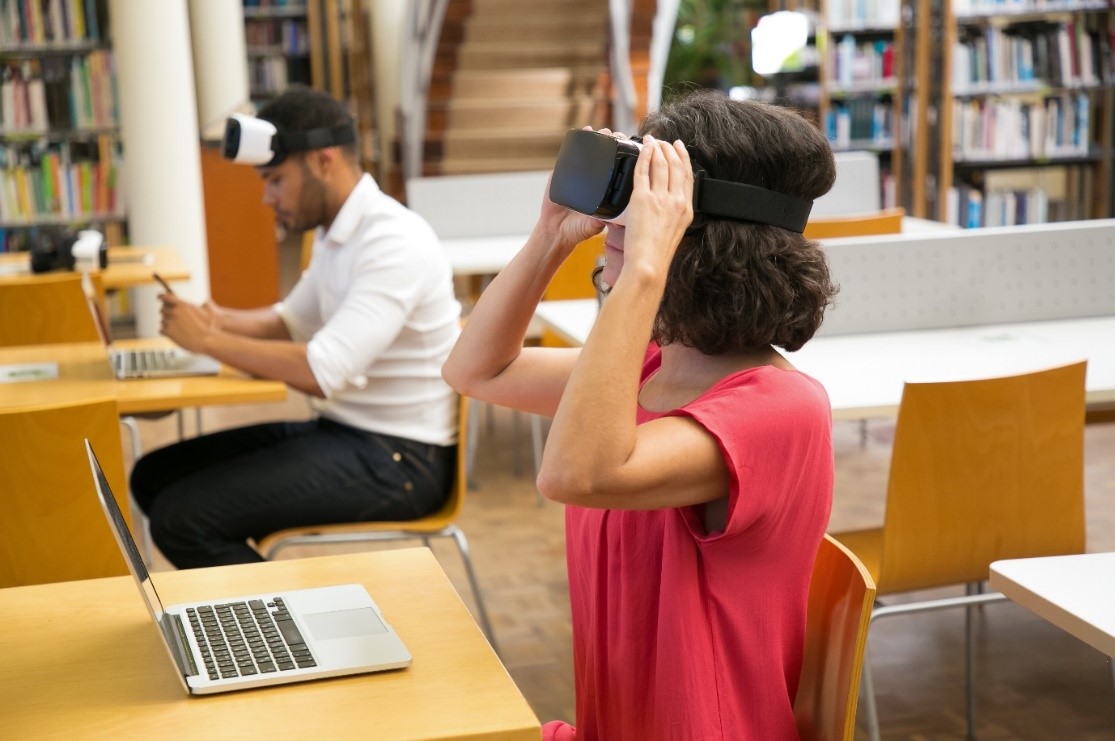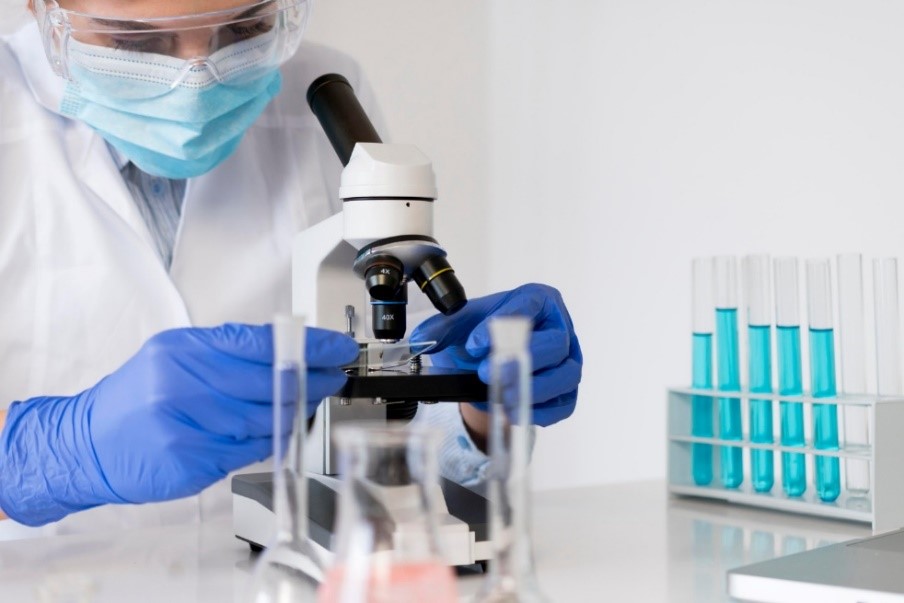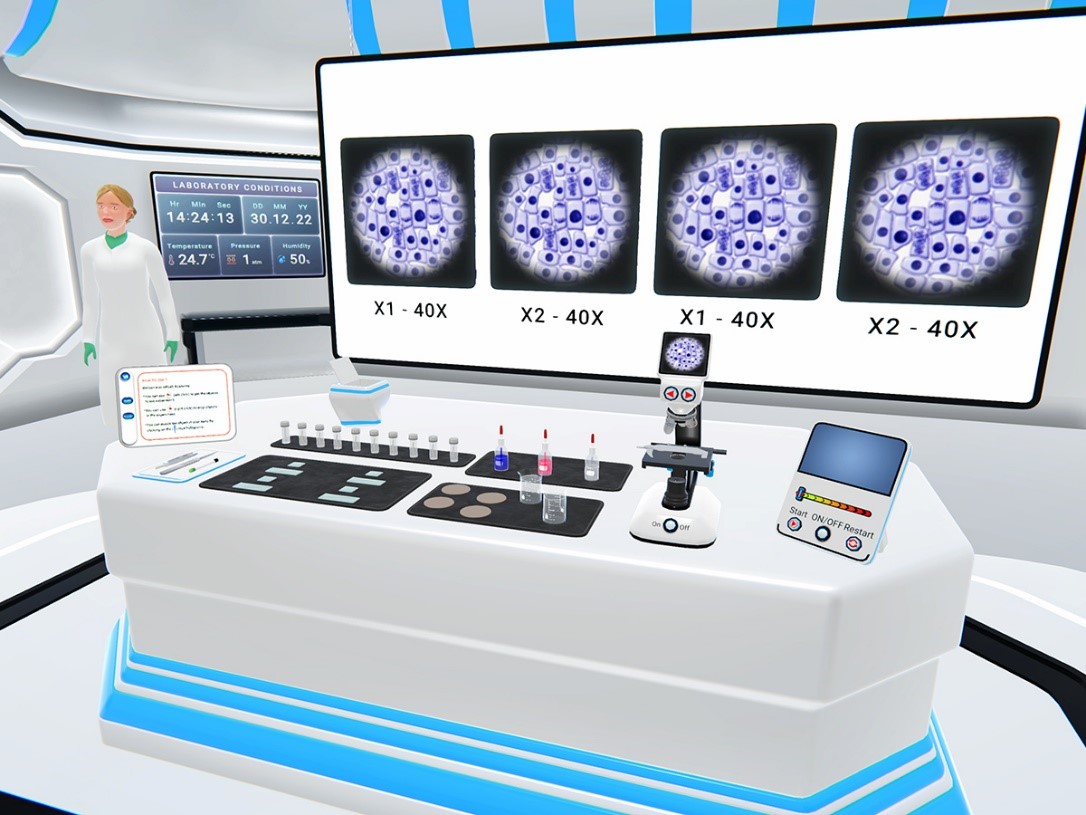Virtual reality (VR) has been used for various purposes over the years, even as a tool for laboratory simulations. These simulations allow researchers to conduct experiments in a virtual environment. This can be particularly useful in cases where it would be impractical or dangerous to conduct an experiment in the real world, or where it is difficult to control variables.

VR laboratories create realistic and immersive environments, and the focus level of learners is increased due to the use of this new technology and tool. Our researchers here at VRLab Academy design and can create virtual representations of high-technology laboratories equipped with expensive devices and sensors in a futuristic setting. This allows them to study scientific concepts, analytical chemistry principles, molecular biology techniques and physics practices such as mechanics, optics, electricity, thermodynamics in a more controlled and precise manner.
Another benefit of VR laboratory simulations is the ability to conduct experiments on a larger scale or with more participants. VRLab Academy, for example, is a platform that allows teachers and students to conduct experiments with thousands of participants in a virtual environment online. This provides a more sustainable learning environment in STEM (science, technologies, engineering, and mathematics) as the user does not consume any lab material such as pipette tips, filter papers, glassware, chemicals, and even biological samples.

Several examples of virtual laboratory simulations have been developed and used in various fields. For example, biologists might use VR simulations to study the anatomy and physiology of the human body like in the Circulatory System experiment or the Skeletal System experiment in VRLab Junior Laboratory. Chemists might use virtual reality to study the properties of molecules or the kinetics of chemical reactions. For instance, in Law of Definite Proportions: The Formula of a Hydrate experiment, students can investigate crystallization and the anhydrous fraction in a hydrated salt. Similarly, Physics researchers might use VR simulations to study the effects of gravity, fraction, and force just like in the Circular Motion and Static Friction experiment in VRLab Academy Mechanics Laboratory.

VRLab Academy also allows its users to reach a million-dollar virtual laboratory independent of time and space, as the users only need to log in to the website and choose the experiment they want to conduct. They can do this as a group at school, during class or as an individual at home, studying for an exam or revising the subjects they have learned in that week. The curriculum alignments of the experiments with international curricula such as GCSE (General Certificate of Science Education), IB (International Baccalaureate), NGSS (Next Generation Science Standard), A-Level, AP (Advanced Placement) also make VRLab Academy a great tool for students in exam preparation and allows them to get ready for a STEM education at university with its realistic laboratory experience provided with 3D models of laboratory equipment that work with real scientific formulas.
Overall, VR laboratory simulations have the potential to revolutionize the way we conduct experiments and research in a variety of fields. The ability to create realistic, immersive environments and conduct experiments on a larger scale makes VR a valuable tool for education. VRLab Academy makes it easier for researchers to take advantage of these benefits, and we expect to see more and more researchers and schools using VR in their studies in the future. Book a demo meeting to explore possibilities of virtual aboratories more with VRLab Academy and enhance your science education with us.